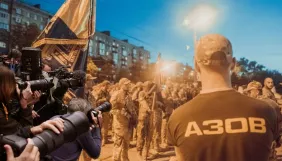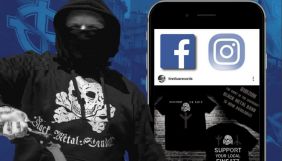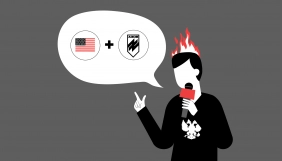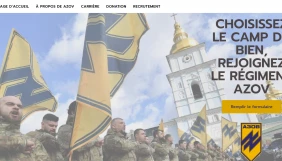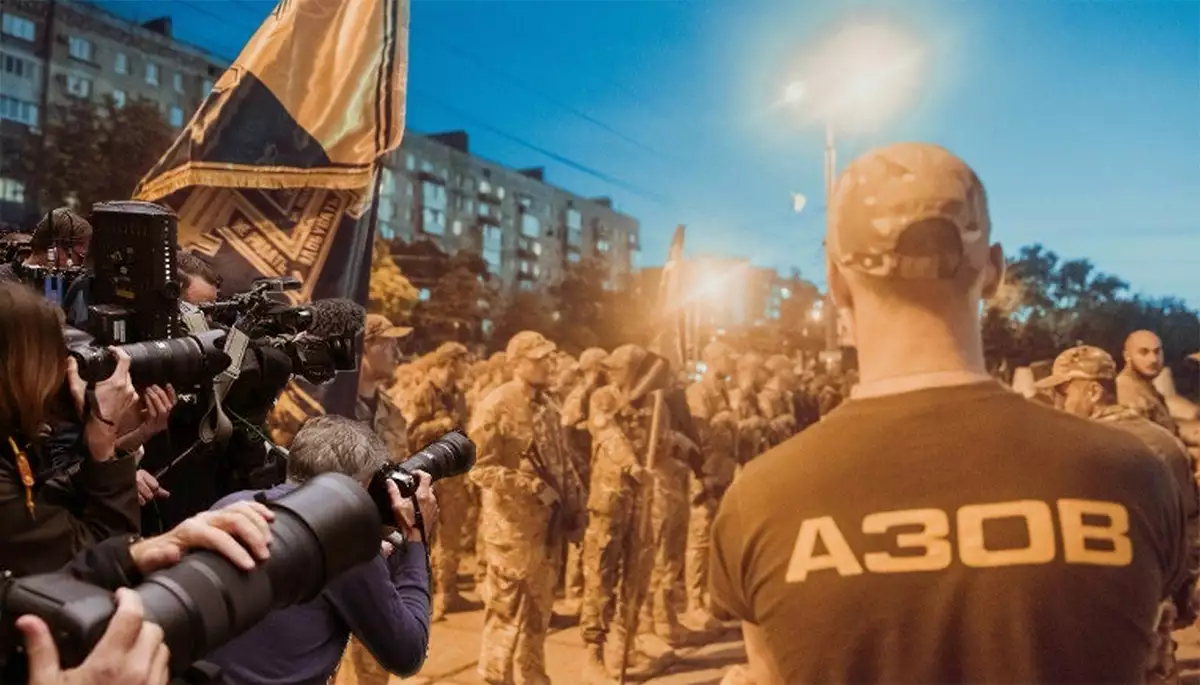
Why Azov is not a “neo-nazi battalion”


One of the most widespread lies disseminated by Russian propaganda about Ukraine revolves around the so-called nationalist battalions. These are, allegedly, illegal armed groups that are not controlled by the government and military command. They ostensibly terrorize civilians and profess neo-Nazism or just Nazism. In the early days of the full-scale invasion, Russian media were trying to convince their audiences that resistance against Russia’s armed forces was offered exactly by these "nationalists", who sometimes even forced the regular army to do so, too. They also argued that Ukrainian civilians, taken hostage by the Nazis, were just waiting for the Russians to denazify their country by disarming and destroying the "nationalists."
To people who have first-hand knowledge of what the situation in Ukraine is like, these stories are nothing but fairytales, yet Russians widely buy the narrative about "nationalist battalions,” especially a particular one - Azov.
The narrative about the (neo)-Nazi battalion of Azov has been carefully developed for eight years. With the help of its foreign friends and agents, Russian propaganda managed to spread this image far beyond the former Soviet republics - concerns about the Nazis in Ukraine were voiced by media and opinion leaders in many other countries. Ukrainian pro-Russian media, in the meantime, promoted disinformation narratives about some "radical nationalists" that the government (first, Poroshenko's team and then Zelensky's one) were too afraid of and therefore the latter did not dare to make peace with Russia on the Kremlin’s conditions. Since it was impossible to provide real footage of the Nazis’ atrocities in Ukraine (due to their inexistence as such), the public was every now and then shown footage from "training camps for children" of a kind, where these latter allegedly spent their days performing Nazi salutes and making a religion of Hitler.
The story of the Nazi Azov was developed in conformity with the rules of a typical disinformation campaign: certain facts, of which there were few, were mixed with assumptions, manipulations and fake news that constituted the majority of information. They were repeated so many times that the target audience eventually accepted them as facts. Yet the effect of this can be seen not only among the older population brainwashed by the Kremlin’s propaganda. Some Ukrainian journalists keep writing about the Azov Volunteer Battalion up until this day, even though it has been inexistent for eight years.
Let's have a look at what Azov is, how it came to be, what it is now, and what it has to do with nationalism, Nazism and neo-Nazism.
Where did Azov come from?
In spring 2014, Russia launched its armed aggression in Donetsk and Luhansk Oblasts, without recognizing its involvement and labeling those developments "a popular uprising against Kyiv junta" instead. Russian military and their local henchmen took to arms, seized local governments’ offices, declared the so-called "people’s republics" and got military equipment in their possession. On April 13, the leadership of Ukraine, (Chairman of the Verkhovna Rada Oleksandr Turchynov was Ukraine’s acting president at the time), announced the launch of an anti-terrorist operation.
Ukraine’s regular armed forces were in an extremely poor condition at the time following years of negligence by the former pro-Russian government. Consequently, volunteers were called to defend Ukraine, many of them having been active participants of the Revolution of Dignity. They were organized into volunteer battalions called Donbas, Aidar, Dnipro-1, Right Sector and others. Azov was also among these newly formed battalions. It came to be in early May 2014 and was called Azoviya at first. The core of the unit consisted of fans of the Kharkiv-based football club Metalist, Avtomaidan activists and members of several Kharkiv-based far-right groups such as the Patriot of Ukraine as well as other organizations that were members of the Social Nationalist Assembly (SNA). Both the Patriot and the SNA were led by Andriy Biletskyi.
Who is Andriy Biletskyi?
Andriy Biletskyi was one of the most prominent far-right figures in Kharkiv. A historian by occupation, he graduated with his final thesis dedicated to the Ukrainian Insurgent Army. He was also a boxer and a leader of the Kharkiv branch of the Tryzub (Trident) paramilitary organization named after Stepan Bandera. Members of the latter were involved in everything far-right people around the world usually do – busting drug traffickers, "detaining" illegal migrants, organizing marches in support of "traditional values" and clashing with the police.
Many have said and keep saying that Biletskyi goes by the alias “White Chief”, although he denies anybody having ever referred to him like that to his face. Instead he claims to have been called “White”, which is not unusual given his last name (Biletskyi is a derivative from the word "bilyi", which is Ukrainian for "white"). Available on the Internet is a collection of articles allegedly written by Biletskyi and titled "The Word of the White Chief". Its author dwells on the need "to solve the issue of migrants," national ideology and the new order, of which he sees himself and his associates as creators. In other words, the work is a collection of far-right clichés.
Ever since Biletskyi became a public figure, he has ceased referring to that rhetoric. He does continue writing op-eds about "right-wing governments, social networks, Soros, leftists and cops" conspiring against the far-right movement, though. The reference to cops is somewhat surprising here, since Biletskyi himself is a lieutenant colonel of Ukraine’s National Guard, governed by the Ministry of Internal Affairs.
How did Biletskyi join the National Guard?
Biletskyi’s path to his rank wasn’t exactly easy. As he himself later noted, he "missed out on all the most interesting events", meaning the Euromaidan of 2013-2014, since back in 2011 he had been arrested under Article 187 of the Criminal Code of Ukraine (premeditated gang robbery). That episode is an interesting story of its own: in 2011, after falling out with a Serhii Kolesnyk in an online conversation, members of the Patriot decided to meet him. The meeting resulted in two hammer-pierced holes in Kolesnyk’s skull, as well as stab wounds. Two Patriot activists had gunshot wounds. All survived. Biletskyi claims that Kolesnyk had a combat pistol and was the first one to attack. At the same time, according to the details of the case cited in media reports, the pistol was a non-lethal handgun that shot with rubber bullets. Biletskyi also claims that on the day of the incident he did not visit the premises of the Patriot’s office and that other members of the organization slandered him under the pressure of the police. Anyway, the charges pressed against Biletskyi are surprising, as neither the victims nor the witnesses said that he planned to take possession of Kolesnyk's property. Nevertheless, Biletskyi ended up in pre-trial detention and remained there for two and a half years, until his release on February 24, 2014, as a political prisoner.
Shortly after that, in March 2014, Biletskyi got involved in a shooting episode near the Patriot’s office on Rymarska Street in Kharkiv when its premises were attacked by pro-Russian activists. He also toured the regions, in which pro-Russian demonstrations started, accompanied by a team of so-called "little men in black" who confronted the rallies in support of Novorossiya (at the time this term referred to a proposed confederation of self-proclaimed people’s republics of East and South Ukraine). Soon, in May 2014, the need emerged to defend the city of Mariupol from pro-Russian separatists. According to Biletskyi, Ukraine’s government was the one to reach out to the said unit of "little men in black" with a respective request.
The Azov Battalion was established pursuant to the decision of the Ministry of Internal Affairs of Ukraine on May 5, 2014, in Berdyansk as a special patrol police battalion. Biletskyi claims that this happened after the "partisan fighters" (as he referred to the battalion members of that time) had managed to transfer weapons from a military base in Mariupol, which the separatists had been trying to take control of. Next September the battalion was expanded to a regiment, and in November it was incorporated into Ukraine’s National Guard. Hence, as of today, Azov is a Special Operations Detachment of Military Base 3057 of the National Guard of Ukraine.
Is Biletskyi still the leader of Azov?
Andriy Biletskyi left the post of Azov’s commander in 2014 following his decision to run for a seat in the Verkhovna Rada that autumn. His initial plan to become an MP as a member of the People’s Front faction was stopped in its tracks following a public letter written by human rights activists and experts to the party leader Arseniy Yatsenyuk who asked the latter to remove the far-right candidate from the list. Biletskyi then decided to run as a self-nominated candidate in a single-member district in Kyiv. He handed over the post of Azov’s leader to his friend from the Patriot, Ihor Mykhaylenko. He also retained his rank of lieutenant colonel of the National Guard, even though at the time he was involved in a public feud with the latter.
Biletskyi won the election, but eventually became a less-than-diligent MP, failing to author a single bill that would pass, ranking the first among the most truant MPs of the eighth convocation, submitting no reports of his work, and having an election program that only consisted of six words. In the meantime, he founded the Azov Civil Movement which would later serve as the backbone of the National Corps party led by him. He was also involved in the establishment of a paramilitary organization called National Squad, that was later led by the abovementioned Ihor Mykhaylenko.
Are these movements neo-Nazi?
If viewed through the eyes of Russian propaganda declaring anyone who speaks Ukrainian a Nazi, maybe. The movements themselves state otherwise. Certain variations of Azov’s symbol, the so-called Wolfsangel (“a wolf’s hook”, a runic symbol representing a medieval device to help catch wolves) were used by the Nazis and are still popular among the far-right, but Ukrainian organizations using it construe it as a combination of letters N and I, which is an acronym for "national idea".
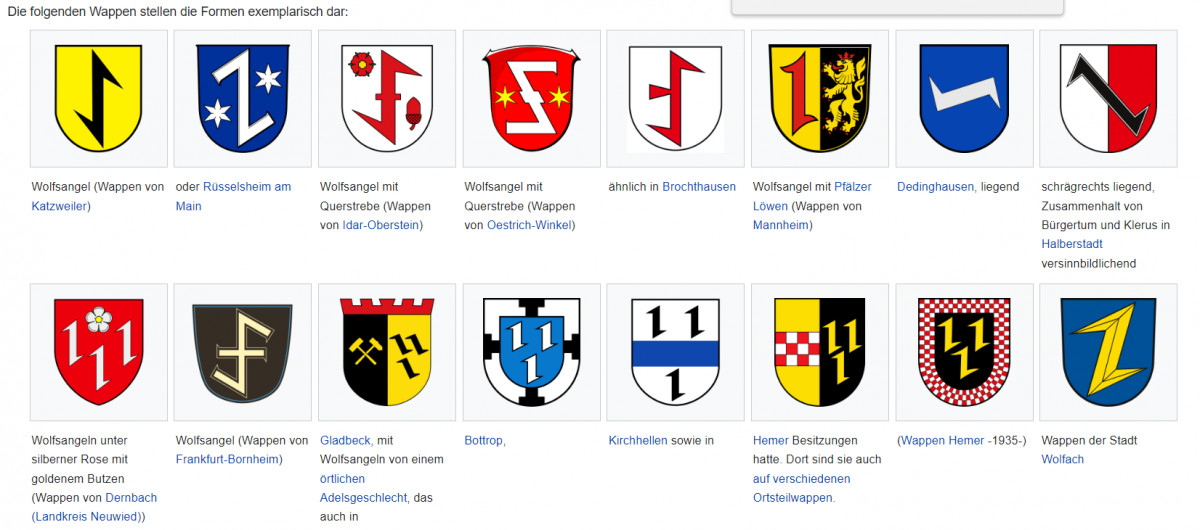
(It is worth nothing that many variations of Wolfsangel resemble letter Z)
Anyway, political and social movements created by Biletskyi and his associates are not the same as Azov, a National Guard unit. In Ukraine, military and law enforcement officers are not allowed to establish or be members of political parties.
Of course, there is some connection between Biletskyi and Azov. The former has been featuring in documentaries about Azov as its founder (for instance, in the one called “Biletskyi’s Azov” shot by Khrystyna Bondarenko), engaging his former comrades and subordinates in his political projects, and raising funds for the wounded. During the first months of the big war, he frequently commented on the situation in Mariupol, too. According to Vyacheslav Likhachov, researcher of far-right movements, Biletskyi treats Azov as a well-known brand which he exploits for better publicity. In his publication titled “Honest Answers to Frequently Asked Questions about Azov in the West”, Likhachov wrote the following: "Some informal links [between Biletskyi and Azov] have remained. However, we are rather talking about public legitimization and transformation of a certain social capital acquired by Biletskyi during his time in the Anti-Terrorist Operation in the East into a political one. The same approach had earlier been employed by other public figures who became known to the general public as the founders of volunteer groups, including Semen Semenchenko, the first commander of the Donbas Battalion."
Who was the first one to portray Azov as Nazi, and how?
In this case, the credit goes to Western media. Many American and European journalists, researchers, and public figures see any right-wing movement as an absolute evil and are prone to stigmatizing anything related to them. Consequently, Western media have repeatedly promulgated articles like "Ukraine underestimates the role of far-right in the conflict". Back then, in December 2014, a BBC journalist wrote that Ukraine was not a fascist country and that the far-right were not very popular with voters, yet “they are able to sneak into the government through the Ministry of Internal Affairs”. Perhaps this was meant to be a reference to one of the Azov fighters who held police offices or to the fact of the regiment's existence as a whole. In any case, the article contained pictures of Azov’s symbols. On second thoughts, may they have meant the former head of Poltava’s branch of the Right Sector, Illya Kyva, who served in the National Police?
A journalist from The Guardian, Shaun Walker, who visited Mariupol at the time, called Azov "Ukraine's strongest weapon which may be its biggest threat". The journalist explained in his material that Azov was a concern “due to the far-right, even neo-Nazi views of many of its members." Mr. Walker wrote that he had talked to dozens of Azov fighters and that the views of many of them were rather concerning. However, similar to many other Western journalists, he did not mention the Georgians, Jews and Crimean Tatars that are members of Azov, too, and whom one has a hard time picturing as Nazis.
Another rather weird wording can be found in a piece published by Reuters. The Azov Battalion (the one that ceased to exist in 2014) was pictured in it as a "far-right nationalist pro-Ukrainian volunteer battalion… affiliated with Ukraine’s National Guard." In 2017, Western media went forward to openly accuse the United States of "supporting neo-Nazis in Ukraine." Somewhat later Western media began portraying Ukraine, without any distinction between the Azov Civil Corps, Biletskyi's political party, the National Squad and the Azov Regiment itself, as the largest hub of far-rights that was "exporting" ideology and "trained militants" to Europe and the US. At that time Ali Soufan, a security consultant and former FBI agent who studied Azov, stated that more than 17,000 foreign militants from 50 countries had arrived in Ukraine in the last six years. While recognizing that "the vast majority of them have no apparent links to the far-right ideology," he believed that extremists would soon come to power in Ukraine, similarly to what happened in Afghanistan after the defeat of the Soviets. That statement was made in 2019, when Volodymyr Zelensky came to power.
How much truth there is to these accusations and how transnational or influential the Azov movement may really be is a question of its own. However, a research conducted by an international group called Counter Extremism Project focusing on extremist movements has revealed that there is no real evidence of the said "mass recruitment of far-rights to Azov", be it the NGO, the party or, moreover, the Azov Regiment. For instance, the researchers believe that since the beginning of the full-scale invasion only about 20 fighters joined Azov, with some of them being veterans of the war in Donbas in 2014. Even if some of them have far-right views, their number is absolutely incomparable to the thousands of Ukrainian volunteers and hundreds of foreigners who have come to defend Ukraine only because they believe that Russia's attack on Ukraine was unjustified. Yet the incessant harping on the Azov issue coupled with the failure of Western media and American MPs to tell apart between Ukrainian political parties, the National Guard’s regiment and paramilitary structures had its effect. Back in 2016, Facebook recognized Azov (with no reference to any particular of the said three organizations) as a "dangerous organization" and banned pages that had any connection to Biletskyi’s structures and the Azov Regiment itself. After the initial bombing of Mariupol and other Ukrainian cities, the company allowed "praising Azov", but noted that this exception would only work for posts about the regiment’s service in the National Guard and its role in defending Ukraine from the Russian invasion. - i.e., about what the Azov Regiment is actually doing.
What was it, exactly, that Azov was supposed to “threaten Ukraine” with?
Russian propaganda has been disseminating a narrative that has taken on in Western media well, according to which the “volunteer battalions” (in 2022, Russians started referring to them as “nationalist battalions”) will eventually topple the president and take power into their own hands. However, apart from being a threat to Ukraine, Azov (who exactly? battalion? regiment? detachment? movement? NGO? political party?) allegedly threatens the world, too, by being a "sandbox" for neo-Nazis and extremists. The story goes that these latter will take a foothold and acquire combat experience here, following which they will pose a threat to peaceful European and American countries. For instance, here is an article published by a reputable outlet, The Washington Post, in March, whose authors claim that Ukraine is a “sandbox” for far-right extremists, in which a new ISIS or al-Qaeda may be born in future.
Since in the eyes of Wikipedia Western media are more reputable sources than Ukrainian ones, the largest online encyclopedia still contains an article
in English called “Azov Battalion” designating Azov - with reference to such publications - a "neo-Nazi detachment within the National Guard of Ukraine.”
Most allegations about Azov being a neo-Nazi group are premised on several reports by human rights watchdogs, including Human Rights Watch, Amnesty International, Front Line Defenders and Freedom House who monitored the human rights situation in Donetsk and Luhansk regions in 2014-2015. Their authors accused Azov members of illegal detention of civilians, torture and, in one case, rape. These same accusations are contained in a UN report, although one of the four mentions of Azov therein is about its member being tortured by pro-Russian separatists. There is no mention of hate crimes or Azov involvement in neo-Nazi ideology in the reports.
This is not to say that there were no members in the volunteer battalion, and subsequently in the Azov regiment, who did not share what could be perceived as neo-Nazi views. However, experts write that most of them left Azov in 2014, and the remaining ones were “purged by the new command in 2017.” There are many references to the “National Corps” or the Azov Civil Corps in the context of hate crimes in Ukraine, too. However, there is no evidence that the National Guard’s unit “consists of Nazis” or that neo-Nazi views influenced Azov's participation in hostilities. To all of this, of course, the authors of Russian propaganda opuses (such as “The Bloody History of the Azov Battalion”) are profoundly indifferent. For instance, they call Denys Prokopenko, the current leader of the detachment, a neo-Nazi based on the fact that he is a graduate of the Faculty of Germanic Philology of the Kyiv National Linguistic University.
Why did Western media latch on to Azov, specifically?
Vyacheslav Likhachov believes that media themselves are the ones to blame, since the more often some of them cover Azov-related issues, the more important these latter seem to others. Another reason consists in the admission of foreigners to Azov, some of whom were neo-Nazis. The most scandalous among them is Serhiy “Botsman” Korotkikh, a Belarusian and colleague of the Russian neo-Nazi Maxim “Tesak” Martsynkevich. “Botsman” takes credit for the establishment of Azov back in 2014. In December 2014, President Petro Poroshenko granted him Ukrainian citizenship. Korotkikh is one of the key figures of the “National Corps”; his service in Azov ended in 2014. Now, after the regiment became part of the National Guard, foreigners could no longer serve in it under the law, although in some cases, according to the Azov press service, they can become soldiers of the regiment.
In part, the talks about neo-Nazism are related to the Azov Civil Corps, which, once again, some have hard time clearly separating from the National Guard. Foreigners known in their respective countries for their neo-Nazi and racist views - Americans, Swedes, Norwegians, Germans – were regularly spotted in the Civil Corps. All of this was chalked up to Azov account, which Western media still call “the paramilitary wing of Biletskyi's party.” In practice, though, there is no direct connection between Biletskyi's projects and Azov. However, Biletskyi's incessant hype of the brand and the regiment’s own media activity attract attention of all kinds of media, including Russian propaganda.
Why is Azov such a bee in the Russian propaganda’s bonnet?
This is another example of Russian propaganda having fallen victim to its own horror stories. Based on publications in Russian media, Azov and other “nationalist battalions” started appearing so influential that, for instance, Biletskyi and Azov (who, again, are inseparable in the Russian media’s perception) were designated by these latter the reason of Petro Poroshenko's defeat in the 2019 elections. At the same time, in 2017-2021, Biletskyii and other representatives of the “National Corps” frequented talk shows broadcast by TV channels that belonged to both wings of the “Opposition Platform - For Life” party., i.e. the one led by Liovochkin, Firtash and Boyko and the one led by Medvedchuk. Hence, the audiences of both Russian and Ukrainian pro-Russian media perceived Biletskyii, the “National Corps” (together with Azov in all its forms, for that matter) as important and active participants in Ukraine’s political life. However, when in 2019 Biletskyii ran for an MP’s seat as number two on the list of the “Svoboda” party (along with other representatives of the “National Corps” and the “Right Sector”), it only won 2.15% of the vote and did not get into the parliament.
Interestingly, Chinese propaganda promulgates even bolder fantasies about Azov. According to them, “fighters of the neo-Nazi Azov battalion are involved in “the dissemination of separatist sentiments and unrest” in one of China's provinces, as well as in terrorist attacks in Hong Kong, New Zealand and the United States – the latter being the one who armed and trained these “terrorists”. Biletskyi, who has propounded the creation of an “intermarium” (a bloc of countries between the Black, Baltic and Adriatic Seas) in order to restore “European leadership and reset the Western civilization,” probably never dreamed of a similar scale. (You can read why these statements are fantasies and manipulations here).
Do lies and propaganda about Azov harm Ukraine?
Yes, and not only when it comes to the honor and dignity of Mariupol defenders and Azov members who are fighting elsewhere at the frontline. “Neo-Nazis” are one of the main arguments of those who try to stop or significantly reduce the military and financial assistance of the United States and Europe to Ukraine.
They particularly invoke Azov’s inclusion into the US register of extremist organizations. Indeed, an attempt to do so was made in 2019, when forty senators from the Democratic Party suggested that Azov be added to the list, but it did not happen. Congress has consistently pursued a ban on training, supplying arms and providing other assistance to Azov, and in 2018, a respective amendment was adopted. Covering the matter, American newspaper The Hill reported the adoption of a “ban on the supply of weapons to pro-Nazi militia,” although Azov had been a part of the National Guard for four years by that time.
Russian propaganda inflates these stories in every possible way, reminding that Azov is "forbidden" in the US. Russia even gets outraged that foreign media explain to their audiences why Azov is not a neo-Nazi group and Ukraine is not a fascist state. The Japanese Public Security Agency has even apologized for having previously described Azov as an extremist organization.
Now that a part of Azov members, along with other defenders of Mariupol, have been taken prisoners by Russia, manipulations with regard to this topic are particularly dangerous, since even the Western governments’ appeal to exchange “Azovstal” defenders is presented by the Kremlin as evidence that “Nazism is resurging in the West.” Therefore, the repetition of narratives about the “Nazi Azov” in Western media today may increase the threat to the prisoners for whose release Ukrainian and foreign diplomats are currently fighting.




